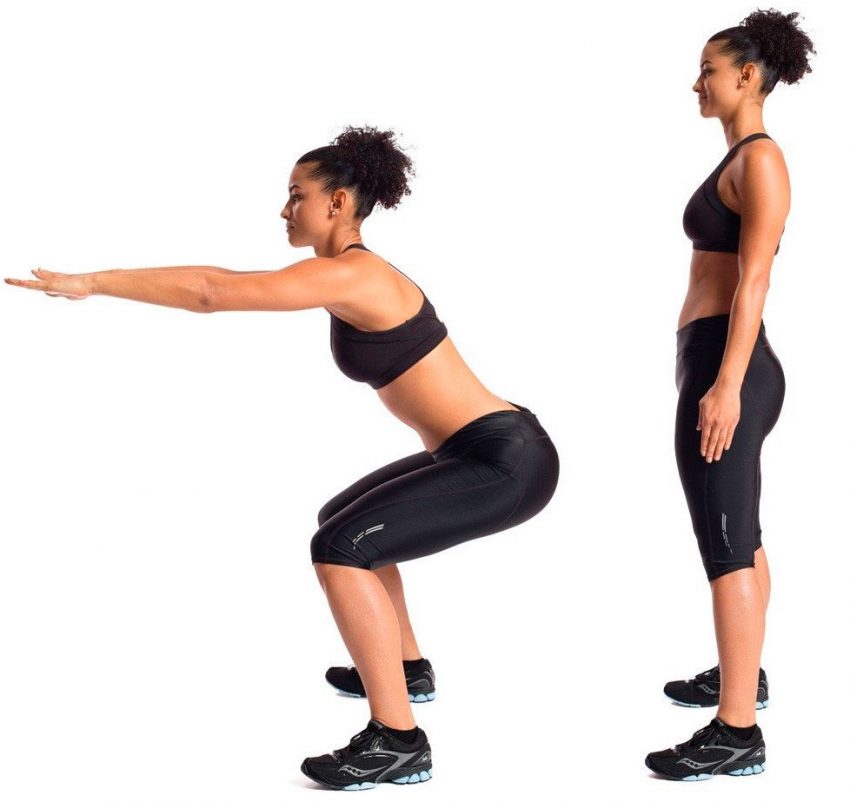Semi squats have a controversial reputation. Tons of memes are created about half squat – half result. But in fact, such an exercise exists as in powerlifting. so in bodybuilding, and it has a right to life. Semi-squats are used as a way to break through the weight plateau, as well as create a specific load on the quadriceps. Half squats are useful for running, sprinting, and long jumps.
Features of the semi-squat

The semi-squat is a specially preparatory exercise for weightlifting and powerlifting. In the first sport, it is used as a way to “accelerate” the dynamic phase of the push, allows you to induce acceleration, and lift the weight off the ground. In the second, it helps to overcome the psychological threshold before a new weight.
The semi-squat is not a lightweight version of the regular sitting. In weightlifting, it is performed differently, in an explosive, aggressive manner. In powerlifting, it is a dynamic version of the regular sedan, but does not allow pauses at the lowest and highest point.
The exercise is performed with substantial weight and is inherently more traumatic than regular sitting. Anatomically, the human knees are not designed to work in such an amplitude and the anterior cruciate ligament of the knee joint takes a heavy load.
In bodybuilding, the exercise is done to build the quadriceps. This sport uses a variation of the semi-squat with the toes facing forward, which does not always correspond to basic human anatomy.
Pros and cons of semi-squat

This exercise can be helpful for:
- working out the lagging quadriceps. In this case, it is used dosed, together with the extension of the legs in the simulator;
- strengthening the back in statics;
- training the skill of moving away from the stances;
- relieving psychological discomfort in front of large weights;
- training the skill of “inserting the knees” for the classic deadlift and clean and jerk;
- working off the stabilization of the hull.
You can find testimonies from professional athletes for whom this particular variation of the squat helped to get rid of discomfort and inconvenience, and to overcome the strength plateau. They argue that heavy weight half-squats develop coordination, literally “pump” the neuromuscular connection. But not everything is so simple.
The movement has obvious disadvantages:
- not everyone can develop sufficient coordination with a half-squat. Most will have to retrain to the classic squat in a new technique with a large number of half-squat approaches;
- exercise loads the anterior cruciate ligament of the knee joint, and provokes soreness and inflammation;
- can cause injury to the lumbar spine, if there are protrusions, hyperlordosis, but the athlete, with perseverance worthy of a better application, performs leading exercises with enormous weight.
Execution technique

The exercise must be performed under the supervision of a trainer, or set up a movement technique with his participation. In normal mode, beginners should refrain from half-squats with anything other than an empty bar.
Technically, the movement is performed like this:
- the bar is installed on the racks at a height that corresponds to the height of the projectile in a regular squat;
- the athlete fits under the bar and places it in the middle of the trapezius muscle;
- removal is performed due to the extension of the legs, and departure from the bar;
- then the knees are spread to the side, the body goes down;
- the depth of the gray is about 5 cm without bringing the femur to parallel with the floor;
- then a powerful extension of the legs is performed, and exit to the starting position.
Beginners think that full extension of the knees should be avoided in the exercise, but this is not the case. The movement is the exact same as the top of a regular squat and should be considered a supplementary exercise only. It is technically important to keep the back upright in the movement and avoid leaning the body forward.
